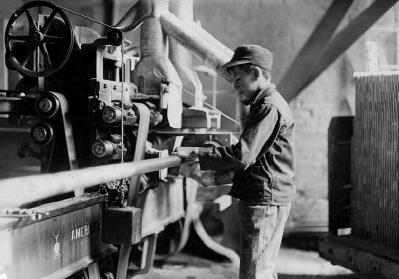Eras and Their HighlightsThe Industrial Revolution |
What were the effects of the Industrial Revolution? |
The dawn of the Industrial Revolution spelled the end of home-or workshop-based production. Factories were built to house the new machines, causing a population shift from rural to developing urban areas by the mid-1800s, as people went where the work was. Factory owners turned to child labor, and in the United States, to the steady influx of immigrants to run the machinery in their plants. As industry grew, it required financial institutions that could provide money for expansion, thus giving birth to a new breed of wealthy business leaders—including the extraordinarily prosperous “robber barons,” the industrial and financial tycoons of the late nineteenth century.
But as industry evolved, government and policy changes did not keep pace: Serious social, political, and economic problems resulted, including poor and often dangerous working conditions, exploitation of workers (including child laborers), overcrowded housing, pollution, corruption, industry monopolies, and a widening gap between the rich and the poor. change was slow to come, but social activism and government reforms in the late 1800s and during the Progressive Era of the early 1900s, much of which centered around trade unions, alleviated these problems. The rapid development of industry caused sweeping social changes: The Western world, which had long been agriculturally based, became an industrial society, where goods and services are the primary focus.

